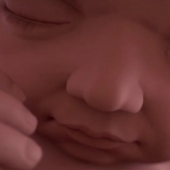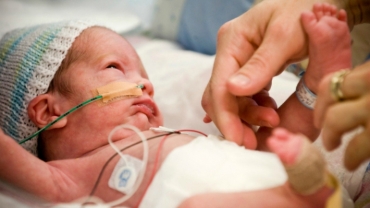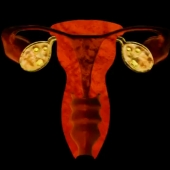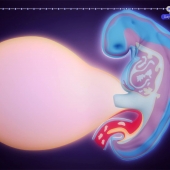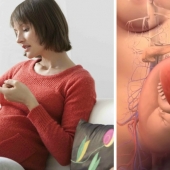What's happening when you're 3 weeks pregnant? Congratulations! You’ve conceived! One tenacious little sperm ran the gauntlet, penetrated your ready egg, and presto! You’re pregnant. Your soon-to-be baby has started its miraculous transformation from one single cell to fully formed baby boy or girl, ready for cuddles and kisses.
Within a matter of hours after conception, the fertilized egg called a zygote divides into two, then splits again and again. Seventy-two hours after fertilization your little zygote has become a ball of 16 cells. This microscopic globe is called a morula, Latin for mulberry. And if you think about it, that ball of cells does look like a berry – a cute little berry that you’ll soon be calling baby.
Over the next few days, the morula continues to drift down your fallopian tube, dividing into a blastocyst, a cluster of cells numbering nearly 100 strong. Its final destination: your uterus, which it’ll call home for the next nine months as it morphs from blastocyst to embryo to fetus to baby!
Meanwhile, swimming along as fast as their little tails can flutter, millions of sperm are making a beeline for that egg. Up through the cervix, into the uterus and then onto the fallopian tube. One especially persistent suitor survives the grueling journey to intercept the egg and burrow into its outer layers. The victorious sperm plunges into the egg’s nucleus, releases its own genetic contribution, and bingo! The egg is officially fertilized. That twinkle in your eye is about to become a baby.
Amazingly, the blastocyst already has two distinct cell types. First, there’s the outer trophoblast cells. They’ll become the placenta, your baby’s lifeline during his stay in your uterine cocoon. The second type of cells is called the embryoblast. This inner cell mass will eventually develop into your baby. Hard to believe, huh?
Though it’ll be a while before you’re able to tell whether your tiny blob of cells is a boy blob or a girl blob, its gender has already been determined by Dad – or actually by his chromosomes. Mom always supplies an X chromosome, but the proud papa provides either an X or a Y chromosome. Two X’s make a girl. An X plus a Y makes a boy. In a few months, you’ll be able to find out what winning letter combination you have growing inside of you.
Did You Know?
Nausea and vomiting in pregnancy (NVP) or "morning sickness" is observed in up to 80% of pregnant women, to a greater or lesser extent. Typically, NVP is limited to the first 7 to 12 weeks of pregnancy, although about 20% of women experience NVP for a longer period of time. Some women even report enduring NVP until the end of their pregnancy.
- 127 views


